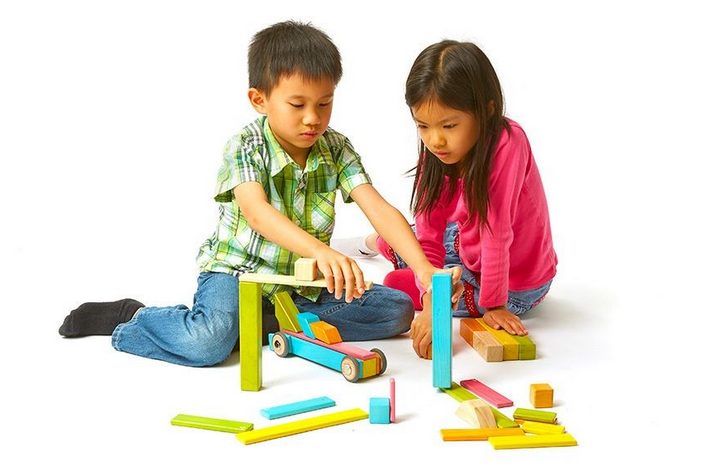Promoting prosocial behaviour
 If social norms determine helping behaviour, it might be argued that changing norms may decrease bystanderism and increase prosocial behaviour. So, the question is, can we actually teach people to help others and avoid bystanderism?
If social norms determine helping behaviour, it might be argued that changing norms may decrease bystanderism and increase prosocial behaviour. So, the question is, can we actually teach people to help others and avoid bystanderism?
Beaman et al (1978) showed a group of students a film about helping. Two weeks later, the students were observed in what they believed was an actual emergency. Actually, the emergency was staged on campus with the goal of observing the behaviour of both those that had seen the film and students who had not seen the film. 43 percent who had seen the film helped, versus only 25 percent of those who had not seen the film.
Staub (1979) also carried out a study to see if prosocial behaviour could be learned. He asked young children either to write letters to other children who were in hospital, to tutor a younger child, or to make toys for chronically ill children. The second group of children were asked to do similar activities, but ones that would only benefit people that they knew. For example, they were asked to make a toy for themselves, writing a letter to their mother or study with a friend. He found that the children who had engaged in prosocial behaviour rather than in behaviour that benefited either themselves or their friends, were more likely to help when placed in a situation where help was needed. It appears that pro-social behaviour could actually be developed through education.
Staub argues that empathy can be learned through community service and other activities such as role-playing. He argues that empathy training should be an integral part of a school's curriculum. Feshbach and Feshbach (1982) trained junior school children to imagine how they would feel in other children’s circumstances, to recognize the feelings of others and to try to share their emotions. Compared with children in control groups, the children who engaged in this empathy training were much less aggressive in everyday playground activities and were more likely to intervene in cases of bullying.
CAS: Building empathy for the homeless
Stanford University's Virtual Reality Lab is investigating the potential role of virtual reality to help people develop empathy for the homeless. Virtual reality simulations allow learners to experience the life of someone else by “walking in the other person's shoes."
The university lab has taken stories about homelessness from their local community and created a virtual reality experience that, at least from initial findings, seems to increase the level of understanding and empathy that students have toward the homeless.
The following film is one of the short films done by a Stanford student to explore the issue of homelessness in their community.
It is rather unlikely that you have access to virtual reality in your school. What could you do to increase empathy for the homeless in your community? Make a proposal for how this could be done and justify your proposal based on your understanding of psychology.
It is rather unlikely that you have access to virtual reality in your school. What could you do to increase empathy for the homeless in your community? Make a proposal for how this could be done and justify your proposal based on your understanding of psychology.
Students will come up with different ideas for how to promote empathy for the homeless. In our own school, students go on "homeless walks" - that is, walks around town on a specific route where they meet homeless people and pass out sandwiches every Friday afternoon.
In addition, our students have carried out interviews with homeless people. This is best organized through a local organization that can help to choose people to be interviewed and can provide a safe space for carrying out the interviews.
Prague was also one of the first cities to introduce homeless tours.
Bystander intervention programs are being taught on college campuses to help reduce the threat of sexual violence. In a study carried out by Banyard et al (2005) 389 undergraduates were randomly allocated to one of two treatment groups or a control. The first treatment group had three sessions on how to help someone in danger of sexual assault or who needed help after being a victim of sexual assault. The second treatment group had only one session and the control group had no training. After four months, surveys were given to determine their likelihood of intervening and their understanding of myths and realities of sexual assault. The findings showed that both treatment groups had a significant improvement as a result of the course and they were much more informed and likely to help.
Although this seems promising, it is difficult to measure the success of these types of programs. First, in the study by Banyard et al, the surveys do not measure actual behaviour, but instead ask participants to consider a hypothetical situation. Even though there is a significant difference between participants’ attitudes if they took the course compared to those that did not, this still does not accurately predict how they will behave in a real situation. Secondly, any real data would have to be self-reported, as it would be unlikely that the researchers would witness a participant in an authentic situation of witnessing sexual assault. It would be unethical to stage such a situation as it may cause significant stress or harm to the participant. Lastly, even if the program may temporarily raise awareness of bystanderism issues, there are too many other factors that may affect an individual’s behaviour, as we have seen throughout this chapter. Therefore, even if an individual does help in an authentic situation, we cannot establish a true cause and effect relationship between the program and the helping behaviour.
Can digital media promote prosocial behaviour?
 Today we live a good part of our lives in a digital world. Does this have an effect on our willingness to help someone in need? Based on what we know about social cognitive learning theory, psychologists are investigating whether video games could help in the promotion of pro-social behaviour.
Today we live a good part of our lives in a digital world. Does this have an effect on our willingness to help someone in need? Based on what we know about social cognitive learning theory, psychologists are investigating whether video games could help in the promotion of pro-social behaviour.
Although some research seems to show that video games can lead to aggressive behaviors, a new line of research has demonstrated the potential for digital media to promote prosocial behaviour. According to Ewoldsen et al (2012) people may learn important prosocial skills when they play games that are specifically designed to reward effective cooperation and helping behaviour. They argue that cooperatively engaging in a videogame against a common enemy could increase feelings of cohesion and promote subsequent cooperation.
An early study by Sprafkin et al.(1975) showed that television with prosocial content fosters prosocial behaviour. In their experiment, six-year-old children saw different versions of an episode about the dog Lassie and were then given the opportunity to help some puppies in distress in the next room. In the prosocial condition, Lassie saved her puppies by barking for help. In the control condition, Lassie demonstrated no prosocial behaviour. The result showed that children in the prosocial condition were more likely to help a puppy afterward compared to those in the control condition.
A key limitation of such research is that the children are exposed to a similar experience immediately after viewing the film. There is no evidence that viewing such a film would have a long-term effect on their willingness to help. It could also be argued that the lab is a somewhat artificial environment but on the other hand, watching a television program with Lassie is something kids would do at that time. In addition, we cannot determine from a study like this one that children would be able to generalize prosocial behaviour to other contexts.
According to researchers, there are good reasons to assume that playing video games with prosocial content may foster prosocial behaviour.
Research in psychology: Greitemeyer and Osswald (2010)
 The researchers conducted experiments where participants played either a prosocial (City Crisis) or neutral (Tetris) video game. Thirty-six students (13 women, 23 men) from a German University were randomly assigned to one of the two video game conditions.
The researchers conducted experiments where participants played either a prosocial (City Crisis) or neutral (Tetris) video game. Thirty-six students (13 women, 23 men) from a German University were randomly assigned to one of the two video game conditions.
The participants entered the lab one at a time and were greeted by two female researchers. One of the researchers then demonstrated how to play the video game and the participants then played for eight minutes.
One of the two female researchers left the room and a male confederate entered the lab, playing the role of an ex-boyfriend who was angry that his ex had left him. When the confederate entered the lab, he ignored the participants and approached the female researcher and shouted at her. He also kicked a trash can and pulled the arm of the researcher as if he would drag her out of the lab. She was instructed to react calmly and asked him not to disturb the experiment.
The independent variable of the experiment was whether participants were playing a neutral or prosocial game prior to the incident. The dependent variable was whether participants intervened or not. Intervention was measured by the participant saying something to the ex-boyfriend with the goal of stopping his behavior or asking the female researcher if she needed help. If the participant did not intervene after two minutes, the second female researcher re-entered the room just as the confederate pulled the arm of his “ex”, and ordered him in a harsh tone to leave the room. Then the harassed researcher apologized for the disturbance and asked the participant to continue the experiment. The participant played on for one more minute and then filled out a questionnaire on the prosocial content of the video game. All participants were debriefed afterward to ensure that they suffered no harm after witnessing the rather unpleasant harassment of the experimenter.
The results showed a significant relationship between the type of video game and the frequency of helping. Only 4 out of 18 participants who played a neutral video game intervened, whereas 10 out of 18 who had played a prosocial video game intervened. From this, it seems that playing a prosocial video game could prime participants for prosocial behaviour - even in a case where they could fear negative consequences.
This indicates that playing prosocial video games has at least a short-term effect on a person’s likelihood to help someone in need. This is one of the limitations of experiments like this one; we don't know if there is a long-term effect. The observed effect in this experiment might be due to priming rather than learning. The researchers argue that the practical implication of their research is that there is a need for television and prosocial video games to teach prosocial skills and improve social interactions. This is supported by a meta-analysis of the positive effects of television on children's social interactions. Mares and Woodward (2005) found that television with prosocial content increases prosocial behaviour, reduces aggression, and encourages viewers to be more tolerant. Bandura's social cognitive theory could explain why this happens. Watching prosocial behaviour either on television or in video games shows the viewer the consequences of such behavior. Seeing the rewards received by the person who carried out the prosocial behavior results in vicarious reinforcement.
ATL: International Mindedness
As a result of the wars in the Middle East and Africa, we have seen an increase in the number of refugees. Not everyone, however, feels that refugees should have the right to seek a home in another country. How can we help people be more empathetic when it comes to the needs of people living in countries that are plagued by war or famine?
What if they actually got to experience what it was like?
Nonny de la Peña promotes the concept of "immersive journalism" - that is, combining virtual reality with the news.
Watch the following Ted Talk about her groundbreaking idea. Based on what you have learned in this unit, do you think that her idea would work? Why or why not?
First, it is important to realize that virtual reality has come a long way since she did her original study.
Students may want to look at how virtual reality is being used today to promote tolerance for refugees.
Checking for understanding
Which of the following would be a problem with determing the effectiveness of a program to encourage students not be bystanders?
Banyard et al's (2005) study lacks ecological validity because
How did Greitemeyer and Osswald (2010) attempt to minimize ethical concerns in their study on the role of video games on pro-social behaviour?
One limitation of Greitemeyer and Osswald's (2010) study on the role of video games on pro-social behaviour is that we don't know if the behaviour is because they learned prosocial behaviour by playing the game or if they simply had a heightened awareness of helping while playing the game. This heightened awareness is referred to as
Social cognitive learning theory would argue that children may develop pro-social behaviour by watching television characters be rewarded for pro-social behaviour. This is explained by the concept of

 IB Docs (2) Team
IB Docs (2) Team
